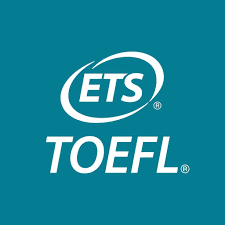TOEFL Listening Pattern
Since listening is one of the most significant skills required to reside abroad, TOEFL listening concentrates on evaluating the aspirant’s ability to understand not only the English language but also the different accents used across the globe. Universities will have lectures, workplaces will require constant communication – TOEFL listening measures every aspect while taking the test. With proper TOEFL Listening Preparation Tips, candidates can easily score above 25 on the scale of 30.
TOEFL new exam pattern of listening has two categories – Lectures and Conversations:
3 – 4 lectures having 3 – 5 minutes duration accompanied by 6 questions per lecture;
2 -3 conversations with 2 speakers, each having 3 minus duration accompanied by 5 questions per conversation;
TOEFL new pattern of listening are:
- The total time period is 60-90 minutes;
While playing audio clips, speakers of audio will appear on the screen
The test taker can find specific term written on-screen taken from audio clip
Test takers can also hear different accents of English in audio clips
The listening score will be calculated as the total of raw points later it will be scored on a scale of 0-30.
TOEFL Listening Question Types
Few candidates get confused with TOEFL Listening Question Details. Most of the listening questions come from reading section passages and the candidates should pay attention to understanding the tone of the passage.
Gist Content/Purpose: the gist content asks you to provide the fundamental idea of the recording listened to. Whereas, the gist purpose asks you to find the main aim of the recording. This question type can be recognized by phrases like – ‘MAINLY ABOUT’, ‘MAINLY DISCUSSING’, ‘WHY DOES THE STUDENT’, ‘WHAT IS THE MAIN PURPOSE;
Detail Questions: This kind of question ask the candidate to provide the factual details they derived from the recording. This can be recognized by questions like – ‘ACCORDING TO..’, ‘WHAT IS…’;
Function: This kind of question require the candidate to identify the original meaning of the context given. The difference between the surface meaning and real meaning needs to be studied here;
Attitude: Here, the candidates need to identify the attitude or expression of the stated words. It can be identified by phrases like – ‘WHAT IS THE PROFESSOR’S ATTITUDE?’, ‘WHAT DOES THE CANDIDATE THINK ABOUT?’
Organization: This type of question require the candidate to showcase how the lecture is structured. This can include questions like – ‘WHY DOES THE PROFESSOR MENTION ABOUT..?’, ‘WHY DOES THE PROFESSOR DISCUSS…?’
Connections in Content: This question type focuses on the connections among the ideas given in the lecture. This question generally appears in the fill-in-the-blanks type with questions like – ‘WHAT IS THE LIKELY OUTCOME..”
Inference: The candidate needs to identify the underlying meaning of the lecture since it will not be explicitly stated.



Recent Comments